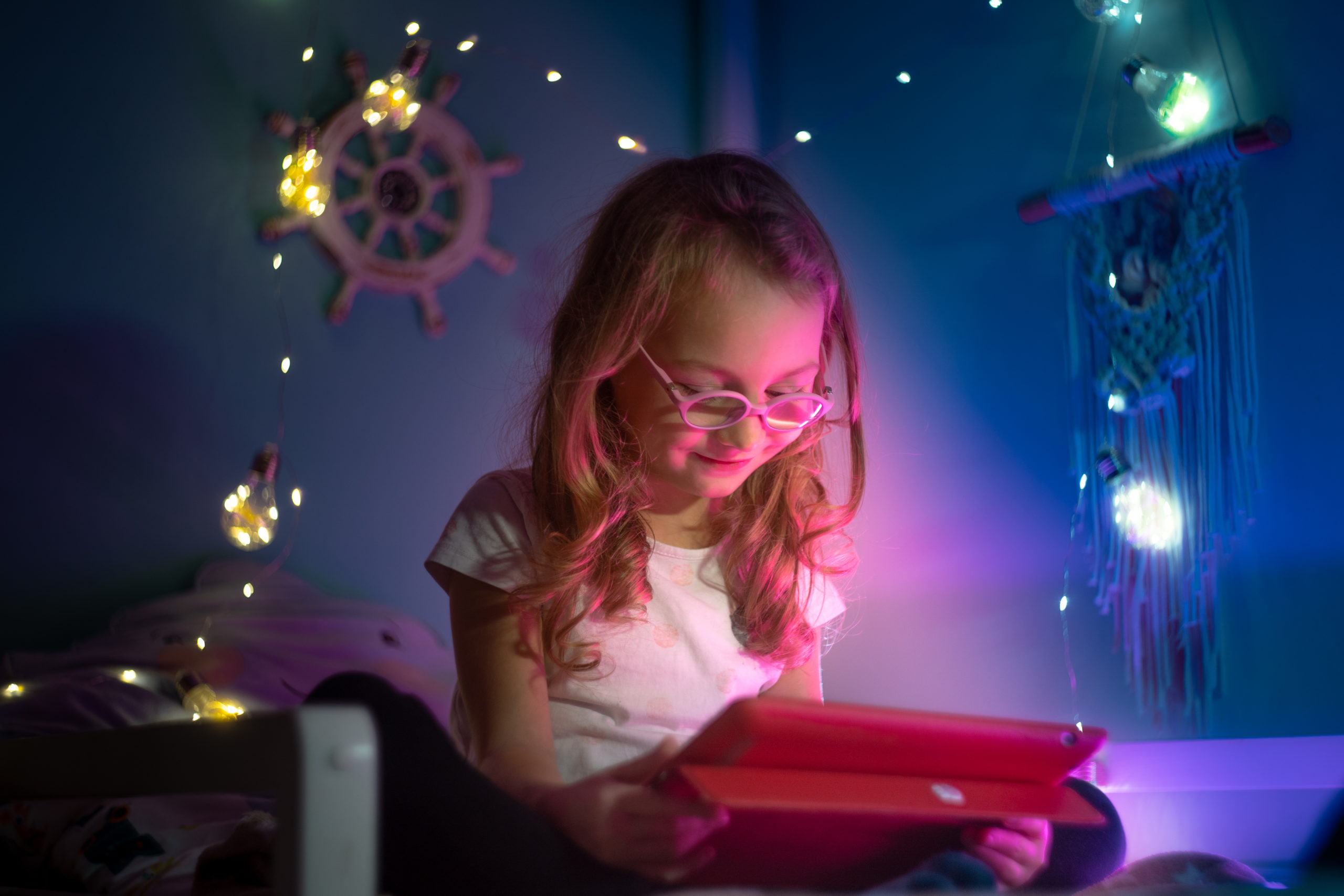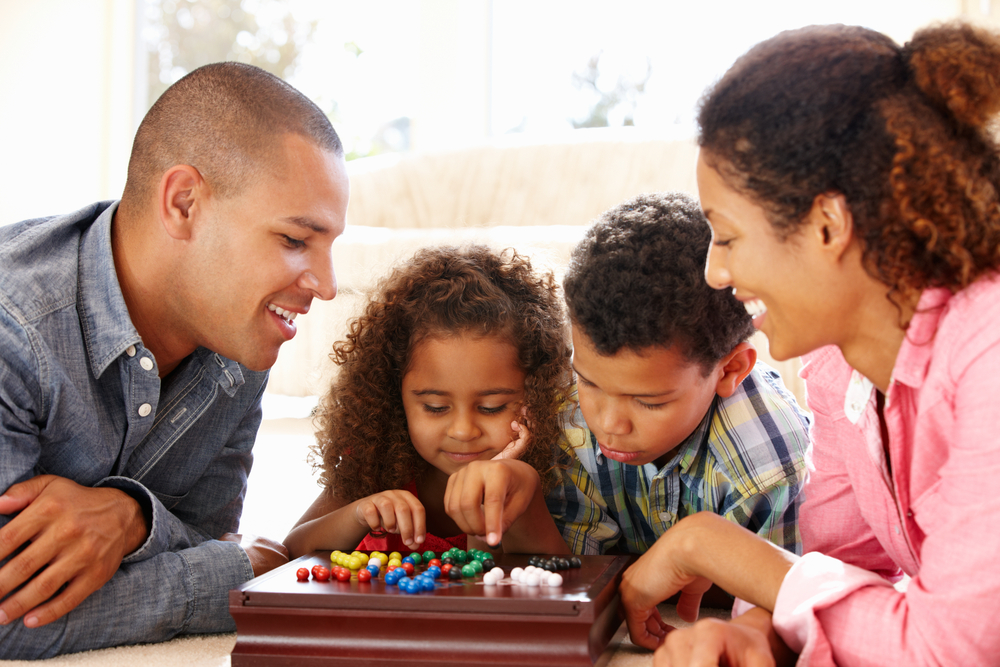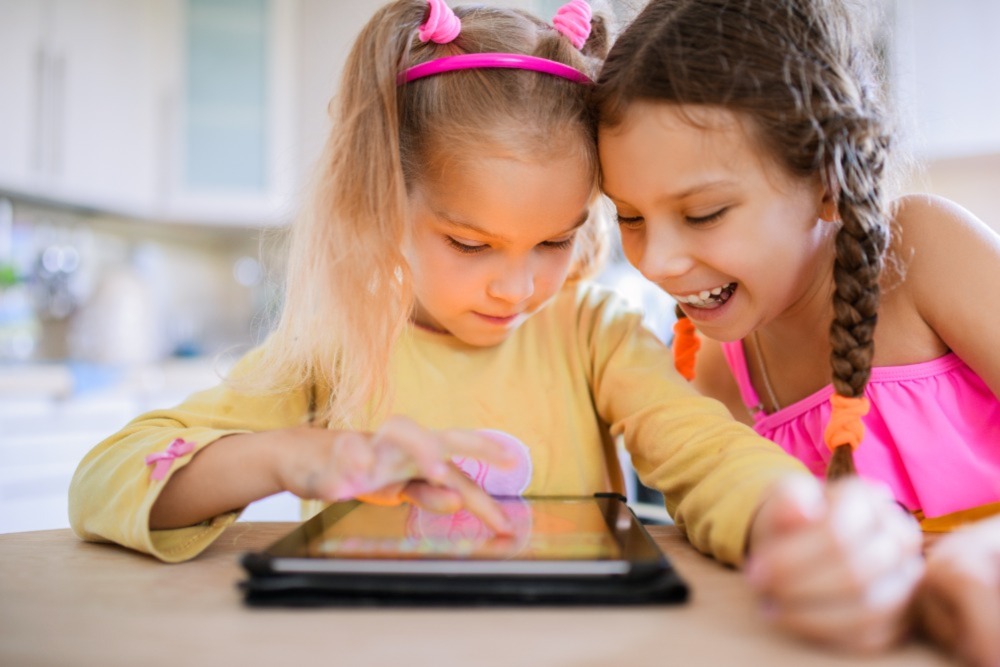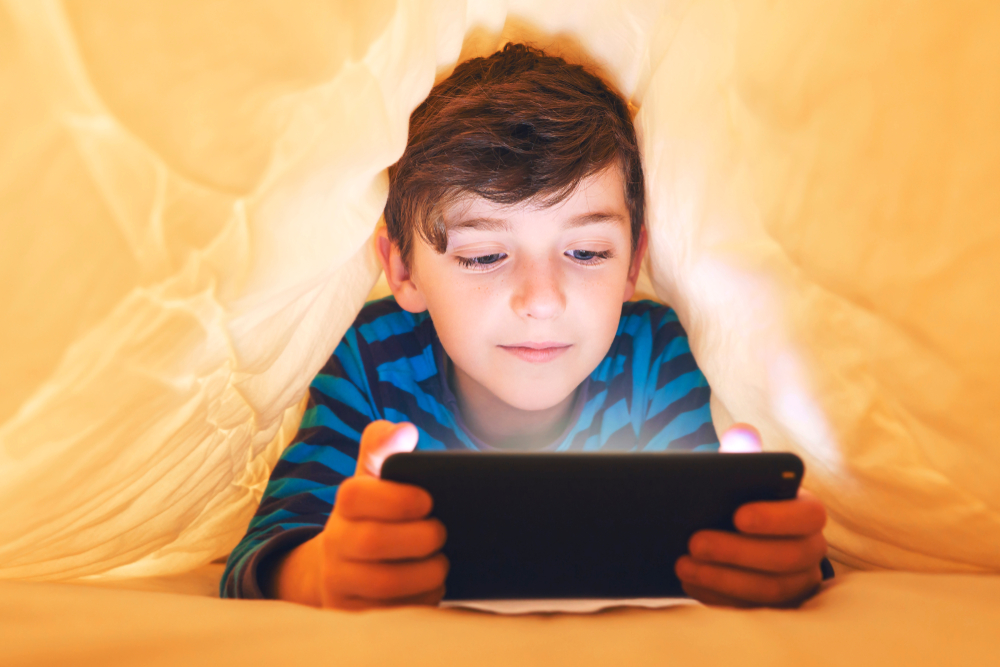Kinjo believes in the learning power of games; but, for years now, video games have been getting a bad rap.
While new research points to benefits of gaming, many people remain unconvinced.
When we started Kinjo, we knew the importance of bringing on advisors skilled in game design and learning theory, and Chris Bennett is our unicorn – he’s an expert in both!
About Chris
Chris has been working in game design since the 90s, helping to develop games for the Sony PlayStation. But his game design journey ended up taking him to unexpected places, including corporate meetings and teaching at Stanford University. LinkedIn
This interview explores a world of possibilities for gaming and education, from how Kinjo uses Game Design Thinking to the science of motivation. We hope you enjoy the conversation as much as we did.
Background in Gaming
Laura: Hi Chris! I’m so excited to chat with you today. To start, I’d love to hear more about your professional background in gaming.
Chris: I started making video games for the PlayStation way back in the 90s. I worked on some of Electronic Arts’ early online games including Tiger Woods PGA Tour Golf and The Sims. Then I worked on some fun mobile games and got to design some Diner Dash games. It was quite a ride!
Then I started working as a consulting game designer, but I was getting offered more projects that weren’t really games.
Instead, non-gaming businesses were trying to learn from great game design. And I gravitated toward those projects working on health experiences, education apps, and more.
Around that time I was also invited to guest lecture at Stanford University. It seemed that everyone was trying to figure out how exactly game designers add the “magic fairy pixie dust” to make games so engaging.
Fast forward to 2023 and I am now affiliated with the Learning, Design, and Technology Masters Program at Stanford University Graduate School of Education. I help co-teach several classes there. Plus I’m an advisor to Kinjo where I get to use my experience in games and education to help parents and kids make better choices online.
Game Design Thinking
Laura: I saw on your LinkedIn bio that you use Game Design Thinking when consulting with non-gaming businesses.
Can you explain Game Design Thinking and how it’s different from the gamification we see in most education apps?
Chris: Gamification started as a sort of panacea. People thought if you just made everything into a game then people would love doing it.
And now we have toothbrushes giving us useless points when we brush our teeth, 401k programs awarding us badges, and sales teams getting disincentivized because they aren’t on top of a leaderboard.
Game Design Thinking came out of my dissatisfaction with the state of gamification.
Chris Bennett
My former Stanford colleague, Margarita Quihuis, and I started to wonder, “What could the future of gamification look like if we concentrated on the person rather than the goal?”
We wanted gamification to be human-centered. We spend a lot of time looking at the science of motivation and what really engages people in a task.
To accomplish this, we examine these basic pillars behind the science of game design:
- What actually makes games engaging to play?
- How does good game design incorporate behavior design (based on the works of Dr. BJ Fogg and others)?
- How and why do we make the decisions that we do?
- What is happening in our brains when we play games and when we learn?

The Science of Motivation
Laura: I know it’s an incredibly complex topic, but I’m sure parents would love to know more about the science of motivation. Can you dive into that a bit more?
Can parents help “improve” their child’s motivation for learning?
Chris: I think the most important thing we’ve discovered about motivation is that it is not an “on-off” switch. There is actually a continuum of motivation.

You can have someone who is “amotivated”, as in you couldn’t talk them into doing something.
Or someone can be externally motivated, meaning they’re motivated either by receiving rewards or avoiding punishments. If you have a middle or high schooler you probably can relate to this!
Or you can be intrinsically motivated to complete a task, meaning you do something because it is personally meaningful for you, and resonates with your own goals and aspirations.
When a task totally aligns with who you are, you’re more likely to be intrinsically motivated.
I use the example of running — at best I’m extrinsically motivated and would run only if there was a good reward in it for me. But my sister-in-law travels around the country to run in marathons. She defines herself as a runner!
In a nutshell, motivation works in the long term when it aligns with a person’s goals and aspirations.
And motivation works in the short term when a task gives someone:
Autonomy (choices on how to reach a goal) Competence (the goal is something they’re capable of doing) Relatedness (they have an idea of why they’re doing this)
This works for all sorts of motivation, not just for learning.
So let’s think about this in terms of your child’s activities and their learning:
There are subjects and skills you want your child to learn, and it’s important to give them choices of activities to engage in and provide tasks close to their level of ability.
But you also have to explain to them why these things are important, connecting the tasks back to goals they want to achieve as well.Chris Bennett
Thankfully Kinjo can help with this by identifying games your child may have not tried yet but will likely be interested in. And from trying out those new games, they’re practicing important skills while earning rewards.
Bringing Game Design Thinking to Kinjo
Laura: Can you describe how you’ve brought Game Design Thinking to Kinjo?
Chris: Kinjo co-founders, Charles and Laura, initially invited me to be an advisor because they wanted to deeply understand how games and learning are connected.
And one of the first things I did was help them look at the top 100 most-played Roblox games on Kinjo.
- Were they actually good games?
- Was there any complexity to them?
- And most importantly, what skills could be practiced while playing them?
And now that we have a system for identifying the best Roblox games, behavior design is being used in the reward system for Kinjo.
We want to understand not only what kids are playing in Roblox, but why.
Then we add incentives for making great decisions (a little external motivation), to subtly shift their behavior in positive ways.Chris Bennett
Is Roblox different from games we grew up with?
Laura: One thing we hear a lot from parents is how different Roblox feels from the games we played growing up.
You have a lot of experience with entertainment software. How do you think Roblox compares to these other experiences you’ve worked on, like The Sims?
Chris: Roblox is intriguing because it’s almost an operating system for creating games. They have made it so easy to get started that there are something like 40 million games you can play on Roblox.
Now obviously most of these games are not great, but two important things happen here:
- When the barrier to entry is lowered it encourages more kids (and adults) to tinker with the Roblox platform and learn about game design, which is good.
- The cream always rises to the top, so with that many games you’re going to get some great ones that become very popular.
The Sims required a large, dedicated team to build the engine the game was based on. Then separate teams would create add-on content for the game while working on new versions for release. It was a more controlled environment, and the success speaks for itself. The Sims has sold something like 200 million copies worldwide.
But I don’t think the ethos is that different. The Sims started off as a people simulator. Designer Will Wright wanted to create something new and fun that people hadn’t seen before. I think a lot of designers on Roblox are trying to do the same thing. It’s just a lot easier to get started now.
Chris Bennett
Link between gaming & learning
Laura: As a gaming expert and educator, what do you think parents need to know about the link between gaming and learning or gaming and education?
Chris: Most conversations with parents tend to focus on their perceptions of whether their kids are doing something valuable, like homework or studying, or something useless, like playing a game.
I think parents need to know that when their kids are playing games (or even watching videos about a game), they are learning something.
So the growth strategy here is to figure out what they are learning, and then match it to the goals that you both have in terms of their education.
Educators know that learning is no longer just about math and reading. There’s a whole list of important life skills that kids aren’t always being taught in school.
As kids grow, they need to learn creativity, complex problem-solving, collaboration, and emotional intelligence...among others.
These skills can be tough to learn in most formal educational settings, but they happen all the time when kids are playing games.Chris Bennett
We just want to open the window and discover more about how and why this is happening so we can build stronger, kinder, and more resilient kids.
What can you do as a parent?
Laura: You just mentioned that a part parents can play in their child’s education is matching the parent’s educational goals for their child with their child’s gaming and life goals. Can you expand on that? What does that look like?
Chris: Sure, here’s an example.
Let’s take a popular Roblox game called Visteria — an exploration-based roleplaying game.
And your child, who has trouble concentrating on their homework, can spend an hour playing Visteria with no problem.
Do they have a concentration problem or an engagement problem?
We can deconstruct your child’s play experience and see they’re engaged in the game because it’s social — they enjoy playing with other kids.
It also has multiple tasks to work on at once — tasks that are just inside of their sweet spot of learning while also challenging them.
And when they play, they’re constantly being rewarded with quick feedback.
All of this creates a truly engaging experience.
And at the same time, it’s helping your child practice complex problem-solving, collaboration with other players, and persistence.
So how can you as a parent line up your child’s gaming time with educational goals?
You can look at what else your child could be doing at home, like working on math problems, doing chores, or reading, and compare it to the benefits of gaming.Chris Bennett
With a given amount of “free” time in the afternoons or on the weekend, it may make sense to follow their interests and let your child spend some time playing a game like Vesteria.
They’ll get a chance to practice several important 21st-century skills that they don’t often get to learn elsewhere (sometimes not even in school).
And you can take a step back from the screen time battles that result when you restrict their choice of activities.
What makes Kinjo different?
Laura: You’ve worked with several businesses as a game design consultant. What do you believe sets Kinjo apart from other Edtech companies?
Chris: Well, you have different kinds of Edtech companies:
- You have ones trying to do traditional education or learning with zero gamification.
- And some, like Duolingo or Classcraft, are adding gamification elements to try and engage learners.
- And then others, like Prodigy or ABCMouse, are creating educational games that add learning to a game environment.
And those are all fine approaches.
But what Kinjo is doing is quite different and something I rarely see in EdTech today.
Kinjo isn’t trying to gamify a sometimes boring educational experience or design a game that is both fun and educational.
Instead, Kinjo is looking at games and experiences that are already out there, then deconstructing them to see where the possible learning is already happening. And translating that in a way that kids and parents can easily understand.Chris Bennett
And Kinjo is adding that extra layer of incentivizing kids and their friends to spend time in games that are more useful for their learning.
There are 200 million kids around the world who play Roblox every month. That’s a lot of potential for learning. And we are only getting started.
We hope you enjoyed this conversation with Chris Bennett. We certainly did! He’s a crucial member of our Kinjo team, and we are so thankful for his gaming guidance and passion for learning!
If you’d like to read more about gaming and education, discover some of Kinjo’s favorite Roblox games for learning, or uncover how Kinjo brings more skill-building to your child’s screen time, explore our blog here!
Kinjo Plus
A parent’s secret weapon for keeping Roblox time educational and safe.
Kids get the best games and real rewards.
- 100’s of trending, parent-approved Roblox games added each month
- Collect Kinjo coins to trade for Robux, V-Bucks, or Minecoins. Cha-ching!
Parents get so much more:
- Easy monitoring: Know about their gaming without constantly looking over their shoulder
- Learning Missions: Guide your child to activities in games that build super-skills
- Weekly Insights: What your kid is playing, how long they’re at it, and who they’re playing with
- Skill tracking: Foster the skill sets your child develops in gameplay








